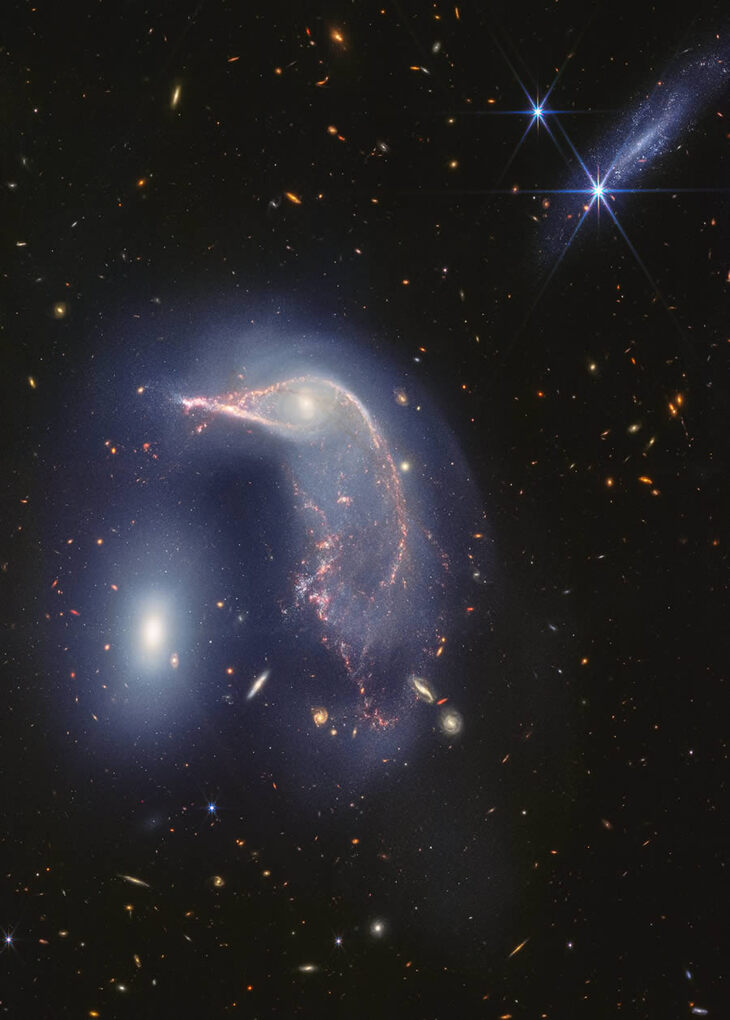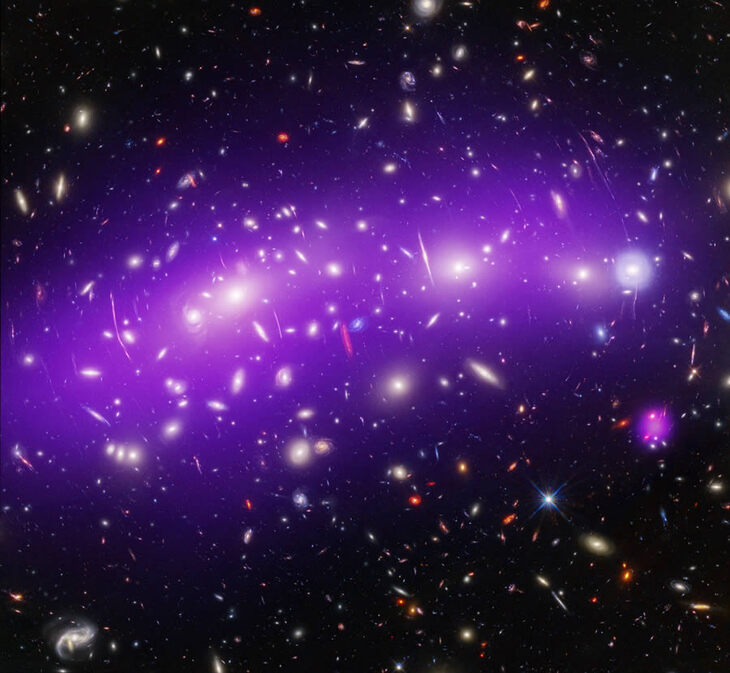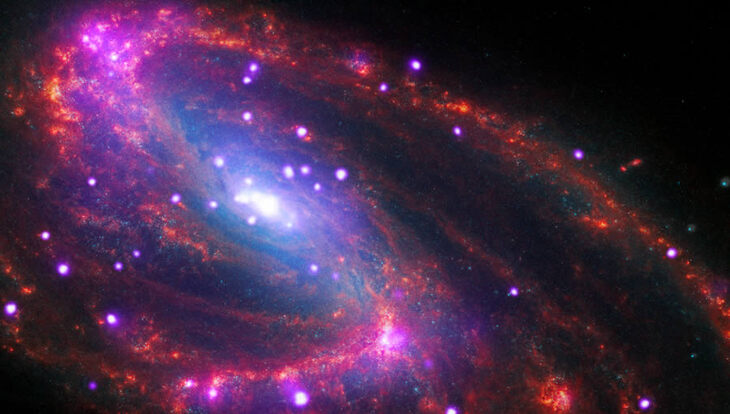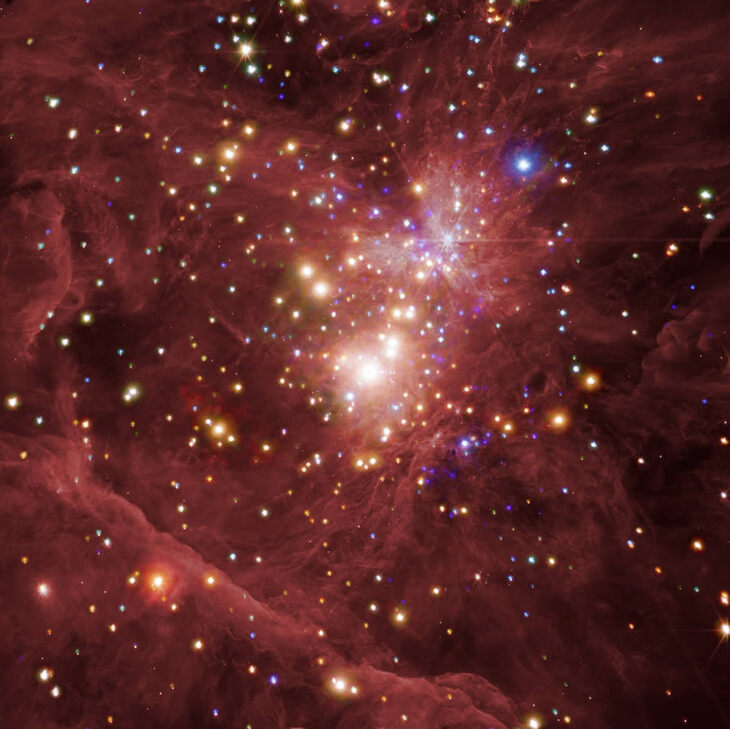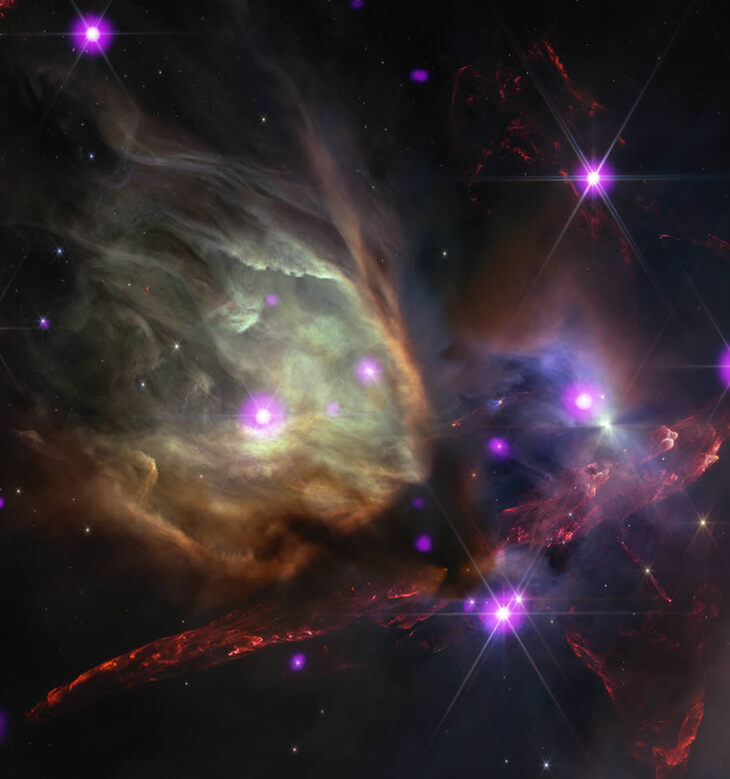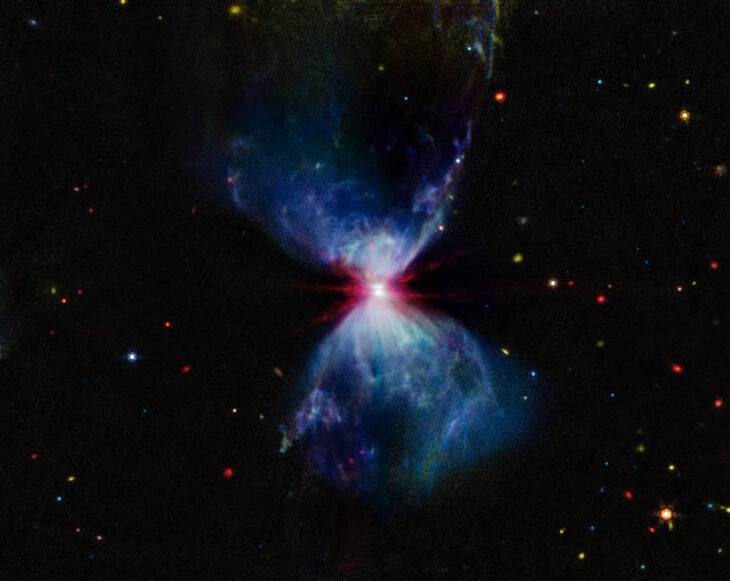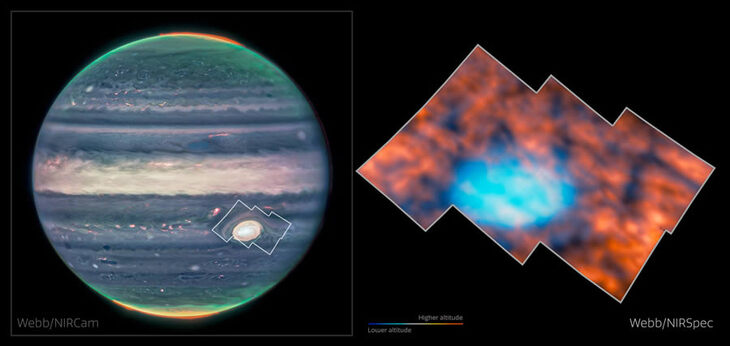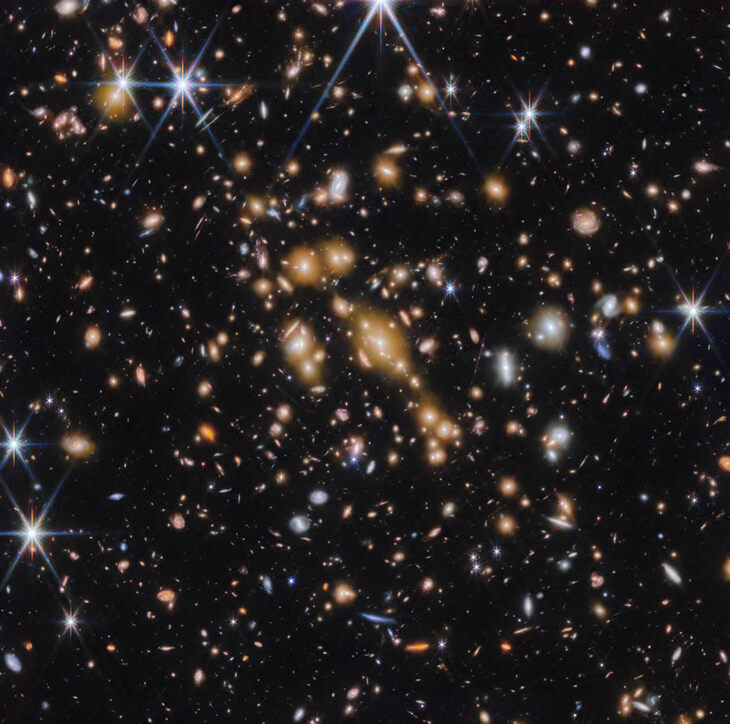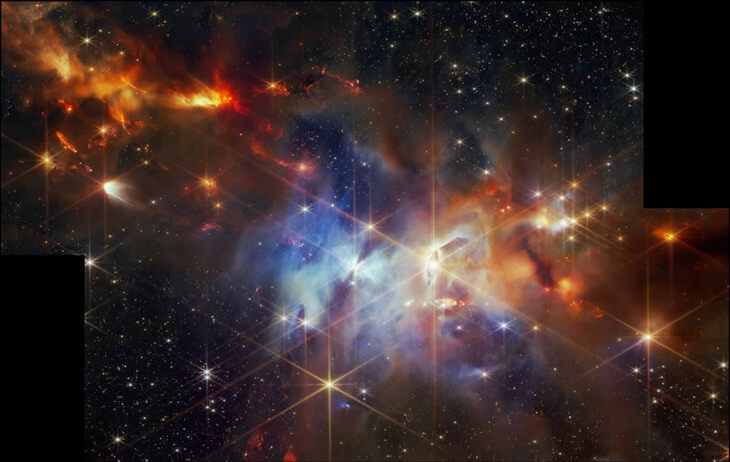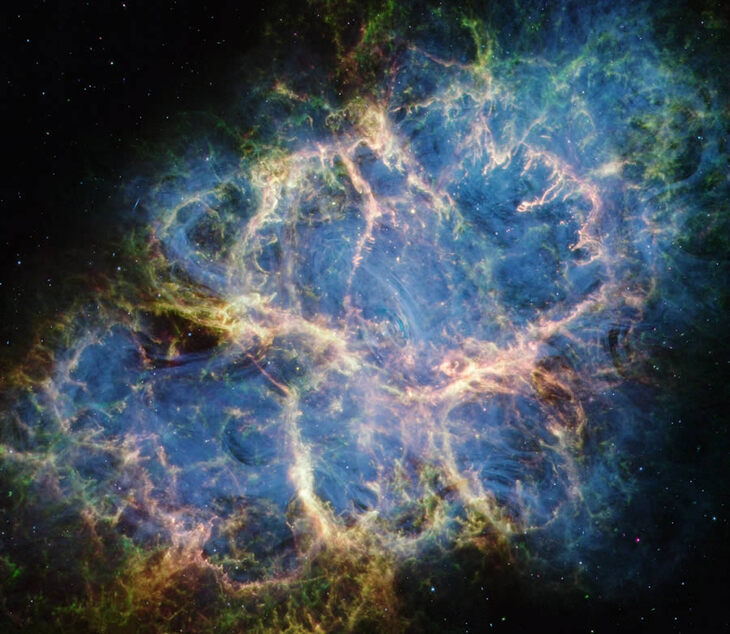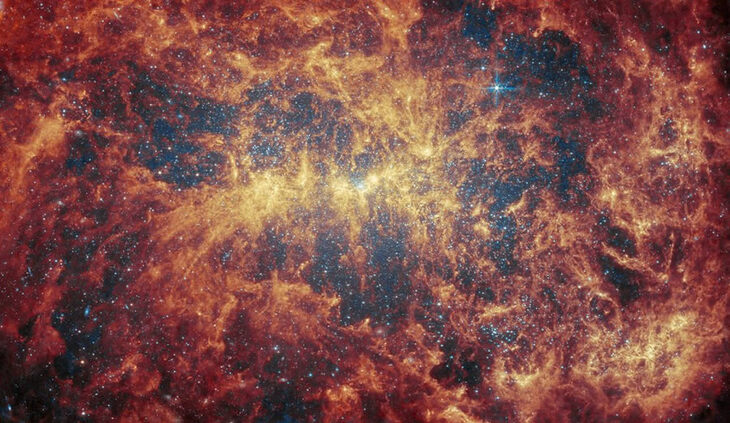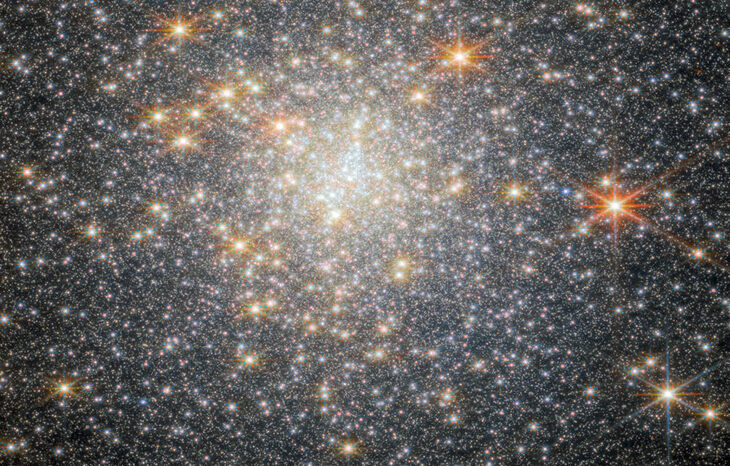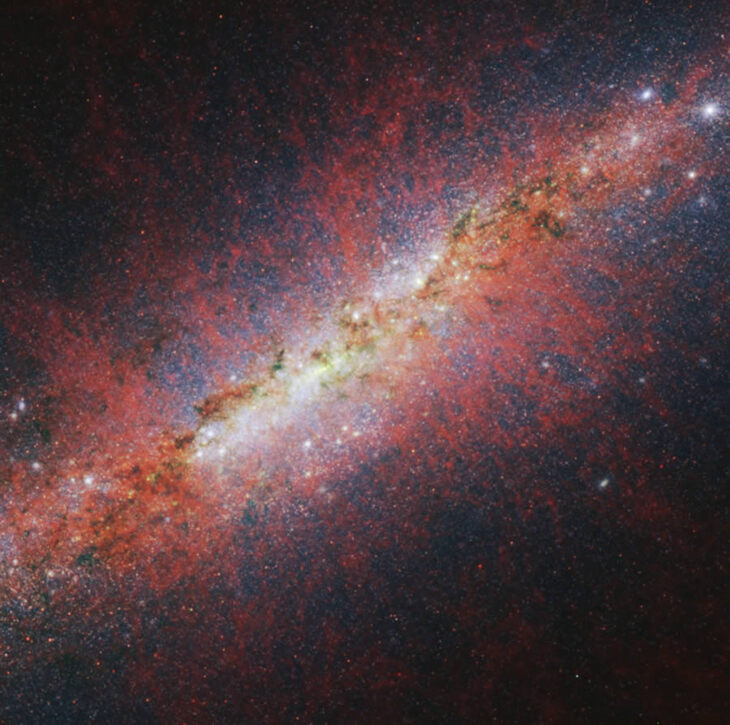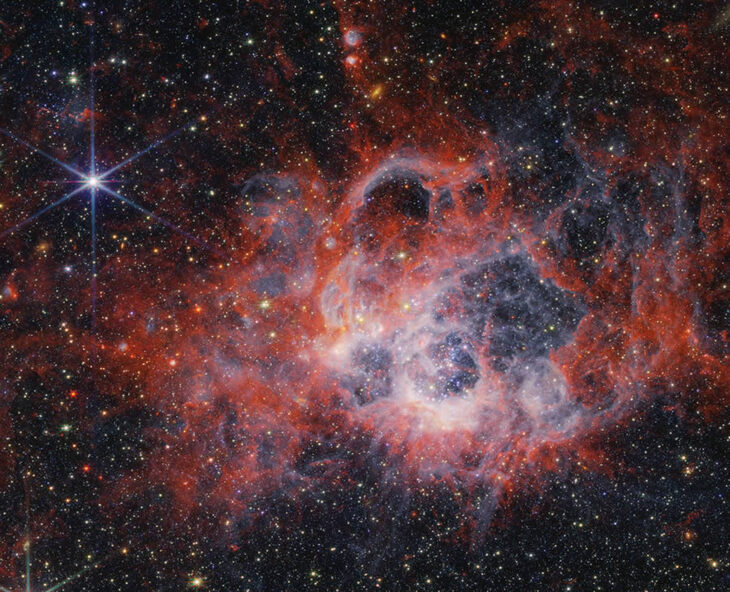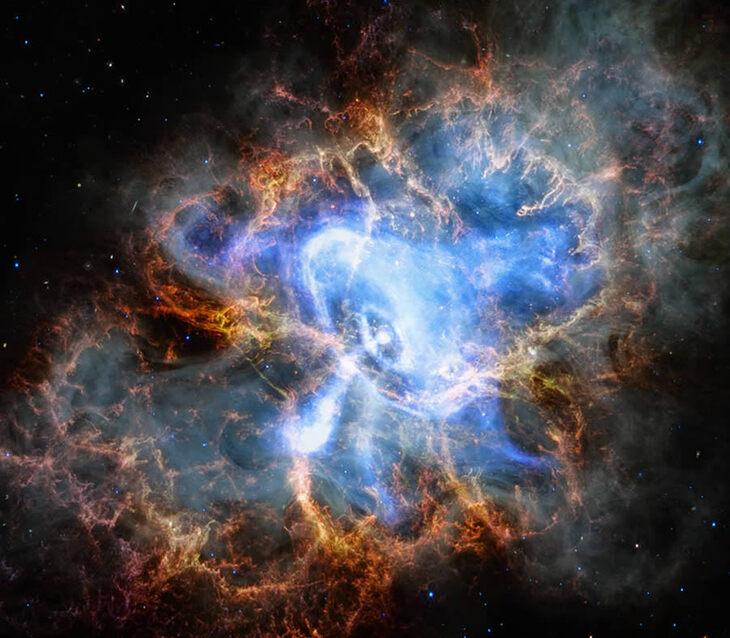The James Webb Space Telescope has revealed a breathtaking image of two interacting galaxies, affectionately nicknamed the Penguin and the Egg. Galaxy NGC 2936, which bears a resemblance to a penguin, appears to be protecting galaxy NGC 2937, fittingly named the Egg. Encircled by a radiant halo of stars and gas, the duo presents a mesmerizing display of cosmic interaction.
2. MACS J0416 (Chandra/Hubble/Webb composite)
This stunning image is a composite from NASA’s Chandra X-ray Observatory, the Hubble Space Telescope, and the James Webb Space Telescope. It shows galaxy cluster MACS J0416, located approximately 4.3 billion light-years away from Earth.
3. NGC 3627 (Chandra/Webb/Hubble composite)
Pictured here is galaxy NGC 3627, located 36 million light-years away. The photo was taken from NASA’s Chandra X-ray Observatory, the Hubble Space Telescope, and the James Webb Space Telescope.
4. Orion Nebula (Chandra/Webb composite)
The Orion Nebula, a cosmic nursery located about 1,344 light-years away, is a vibrant region where new stars are born. This celestial wonder, visible to the naked eye, is a hotbed of stellar activity and a captivating subject for astronomers and stargazers alike.
5. Rho Ophiuchi Composite (Chandra/Webb)
Located approximately 390 light-years away, the Rho Ophiuchi cloud complex is a stellar nursery teeming with gas and dust. This cosmic region is home to a diverse array of stars in various stages of formation.
6. NASA’s Webb Captures Celestial Fireworks Around Forming Star
A breathtaking new image from the James Webb Space Telescope reveals a young star in the making. Hidden within a vibrant hourglass-shaped cloud of gas and dust, a young protostar, only about 100,000 years old, is in the process of formation. This remarkable image offers unprecedented insight into the early stages of stellar evolution.
7. Jupiter’s atmosphere around the Great Red Spot (NIRCam and NIRSpec)
New observations of Jupiter's iconic Great Red Spot have unveiled surprising details about the planet's atmosphere. Using the James Webb Space Telescope, scientists have discovered a complex network of structures and activity above the storm. The data reveals a dynamic and evolving region, challenging previous assumptions about this colossal feature.
8. Galaxy cluster SPT-CL J0615−5746 (wide-field view)
In a groundbreaking discovery, astronomers using the James Webb Space Telescope have detected ancient star clusters formed a mere 460 million years after the Big Bang. This groundbreaking finding challenges our understanding of the universe's early development and opens new avenues for astronomical research.
9. First-of-Its-Kind Detection Made in Striking New Webb Image
For the first time, Webb has captured evidence of aligned protostellar outflows. These appear as bright red, clumpy streaks in the image, all pointing in the same direction. This remarkable discovery provides new insights into the formation of stars.
10. Investigating the Origins of the Crab Nebula With NASA’s Webb
The James Webb Space Telescope has turned its powerful gaze on the Crab Nebula. This celestial remnant, born from a cataclysmic supernova explosion, has puzzled scientists for centuries. Webb's advanced instruments have captured unprecedented details of the nebula's structure, composition, and evolution, challenging existing theories about its origins.
11. NGC 4449 (MIRI)
The Webb telescope captured NGC 4449, a galaxy undergoing a burst of intense star formation. Unlike most starburst galaxies, where activity is concentrated at the core, NGC 4449 shows star formation spread across its expanse, likely triggered by past interactions with neighboring galaxies.
12. Star-Studded Cluster (NGC 6440)
The Milky Way's crowded center has long been a challenge for astronomers. Thick clouds of dust and countless stars obscured our view. However, the James Webb Space Telescope has pierced through this cosmic veil, revealing hidden wonders like NGC 6440.
13. M82 Webb NIRCam – Longer Wavelength
Astronomers have used the James Webb Space Telescope to study M82, a galaxy experiencing a burst of intense star formation. This activity has created a powerful galactic wind, which scientists believe plays a crucial role in shaping the galaxy's evolution. Understanding the dynamics of this galactic wind is essential for unraveling the complex processes that shape the evolution of galaxies.
14. Peering Into the Tendrils of NGC 604 with NASA’s Webb
NGC 604 is teeming with over 200 massive, young stars. Unlike anything found in our Milky Way, this celestial region offers astronomers a unique laboratory to study star formation. Its proximity and the sheer number of hot, bright stars make it an invaluable resource for understanding the early stages of stellar evolution.
15. The Crab Nebula (Webb/Chandra composite)
Six thousand five hundred light-years away, the Crab Nebula captivates astronomers with its ethereal beauty. Born from a supernova explosion observed in 1054 AD, this celestial wonder houses a rapidly spinning neutron star at its center. This neutron star emits intense radiation beams, creating a cosmic lighthouse effect as it rotates.

